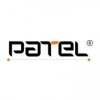Senior Project Manager
200+ Senior Project Manager Interview Questions and Answers

Asked in G R Infraprojects

Q. DESIGIN PROCEDURE :- DLC thickness 150mm. 1:- use M15 grade concrete,max aggregate cement ratio 12:1 2:-The minimum cement content 150kg per cum. If flayash is more than >20% the mini.mum cement content. 120kg...
read moreDesign procedure for 150mm DLC thickness using M15 grade concrete with specific requirements for cement content, testing, mixing, transportation, compaction, and curing.
Use M15 grade concrete with maximum aggregate cement ratio of 12:1
Minimum cement content of 150kg per cum, or 120kg per cum if flyash is more than 20%
Perform 5 sample cube test after 7 day curing with strength of 10 MPA, and 1 sample cube test after 7 days with 7.5 Mpa
Mix DLC in premix batching plant with homo...read more

Asked in Ashoka Buildcon

Q. Design procedure of PQC:- Use M40 grade concrete. 1:- The minimum cement content 360kg percum. If flyash more than 20% the minimum cement contents 310 kg percum. 2:-The flexuar strength of cement concete after...
read moreDesign procedure for PQC using M40 grade concrete
Minimum cement content of 360kg per cum
Flexural strength of 4.5MPA and compressive strength of 40MPA after 28-day curing
Dowel bars and tie bars provided for load transfer and prevention of cracking and deflection
PQC mix prepared in pre-mix batching plant and transported to site
Separation membrane and texturing and sawing operations performed for proper finishing
28-day curing with sprinkler water and hessian cloth and gunny bags...read more
Senior Project Manager Interview Questions and Answers for Freshers

Asked in G R Infraprojects

Q. Design procedure :- 1 :- The minimum cement content 360 kg per cum.if the fly ash is more than 20% the minimum cement content 310 kg per cum. 2 :-The flexure strength of cement concrete after 28 days curing 4.5...
read moreDesign procedure for Senior Project Manager role including cement content, strength, joint design, and surface finishing.
Minimum cement content of 360 kg per cum, or 310 kg per cum if fly ash is more than 20%
Flexure strength of cement concrete after 28 days curing is 4.5 MPA
Compressive strength of cement concrete after 28 days curing is 40 MPA
Dowel bar provided for expansion joint vehicle load transfer between slabs
Tie bar provided in longitudinal direction mid depth of slab ...read more

Asked in Patel Infrastructure

Q. DESINGN PROCEDURE:- 1:- The minimum cement content 360 kg/ cum, if the fly ash is more than 2o% The minimum cement content 310 kg percum. 2:-The flexuar strength of cement concete after 28day curing 4.5MPA. 3:-...
read moreThe design procedure for cement concrete includes minimum cement content, strength requirements, dowel bar and tie bar specifications, and surface preparation and curing techniques.
Minimum cement content of 360 kg/cum if fly ash is more than 20%, and 310 kg/cum otherwise
Flexural strength of cement concrete after 28-day curing should be 4.5 MPa, and compressive strength should be 40 MPa
Dowel bar size of 32mm dia and 300mm c/c length, and tie bar size of 12mm dia and 1m length
S...read more

Asked in Ashoka Buildcon

Q. DESINGN PROCEDURE :- 1:- Use M15 grade concrete. Aggregate and cement ratio 1:2 2:- The minimum cement content 150kg percum. If flayash is more than 20% the minimum cement contents 120 kg percum. 3:- The five s...
read moreDesign procedure for laying M15 grade concrete with specific requirements for cement content, compressive strength, and compaction.
Use M15 grade concrete with aggregate and cement ratio of 1:2
Minimum cement content of 150kg per cum, or 120kg per cum if flyash is more than 20%
Ensure compressive strength of 10MPA after 7 days curing, with no sample below 7.5MPA
Ensure DLC premix batching plant material is homogeneous and uniform
Transport DLC from premix batching plant to site by...read more

Asked in Patel Infrastructure

Q. DESIGN PROCEDURE. 1:-Use M15 grade concete. Aggregate and cement ratio 12:1 2:- The minimum cement content 150 kg/ cum. If the fly ash more than 20% the minimum cement contents 120 kg/cum. 3:-compressive streng...
read moreThe design procedure for DLC mix includes using M15 grade concrete, minimum cement content of 150 kg/cum, and achieving a compressive strength of at least 10 MPA after 7 days of curing.
Use M15 grade concrete with aggregate and cement ratio of 12:1
Minimum cement content of 150 kg/cum, or 120 kg/cum if fly ash content is over 20%
Achieve a compressive strength of at least 10 MPA after 7 days of curing
DLC mix should be homogeneous and uniform, and placed on site by covered transp...read more
Senior Project Manager Jobs




Asked in WSP

Q. Rigid pavement:- embankment to GSB layer same process of flexible pavement. DLC:- 150mm thicknes aggregate size 26.5mm,maximum water content 2%, Soundness test Naso4 12%, MGSO4 18, Angle of abrasion <35% max FI...
read moreThe question discusses the process and specifications for laying rigid pavement using DLC and M15 grade concrete.
Rigid pavement process similar to flexible pavement
DLC specifications - 150mm thickness, aggregate size 26.5mm, maximum water content 2%, soundness test, angle of abrasion, equivalent weight of sand, alkali content
Minimum cement content - 150 kg per cum for flyash less than 20%, 110 kg per cum for flyash more than 20%
Use M15 grade concrete
Cube test results - 5 samp...read more

Asked in G R Infraprojects

Q. Two types of pavent 1:- Flexible pavement 2:-rigid pavement Types of progect 1:- New progect 2:- Realigment of road
Flexible pavement and rigid pavement are two types of pavements used in different types of road projects.
Flexible pavement is made of multiple layers of materials that can flex under traffic loads.
Rigid pavement is made of a single layer of concrete or asphalt that is rigid and does not flex.
New projects involve constructing roads from scratch, while realignment projects involve changing the alignment of existing roads.
Flexible pavement is commonly used in new projects as it ...read more
Share interview questions and help millions of jobseekers 🌟

Asked in Casta Engineers

Q. RIGID PAVEMENT Flexible pavement sn 1no 3no same process on rigid pavements 1:- DLC-150mm 2:- PQC 300mm DLC:- 1 :- aggregate size 26.5 mm 2:- max water absorption <2% 3:-soundness test:- Naso4 <12% Mgso4<18% 4...
read moreThe process and requirements for constructing a Rigid Pavement DLC layer.
DLC layer consists of aggregate with specific size and water absorption properties.
Minimum cement content required for construction.
DLC layer is transported and laid with specific equipment and techniques.
Proper compaction and curing is necessary for the DLC layer.
Tolerance for DLC layer is 6mm +/_.

Asked in Listenlights

Q. *MEP Works:* 1. *Mechanical Systems:* - What type of HVAC system is required (e.g., centralized, decentralized, VRV/VRF)? - Are there any specific mechanical system requirements (e.g., air quality, pressure)? 2...
read moreMEP and Civil Works involve critical systems and structural requirements essential for project success and compliance.
Mechanical Systems: Choose between centralized (e.g., chiller systems) or decentralized (e.g., split systems) HVAC based on building size and use.
Electrical Systems: Assess power capacity needs, considering backup solutions like generators or UPS for critical operations.
Plumbing Systems: Determine the water supply source, whether municipal or well, and conside...read more

Asked in Ashoka Buildcon

Q. Flexible pavement:- 1:- EMBANKMENT:- Take thicknesses 3m approximately as per site conditions 95% compaction 1:- large size soil particles 75mm lumps and cloud. Liquid limit <50%, plastic limit<25% Swelling and...
read moreThe question is about the specifications of different layers in a flexible pavement.
The embankment layer has a thickness of 3m and is compacted at 95% with large size soil particles and effective CBR as per design.
The subgrade layer has a total thickness of 500mm and is compacted at 97% with large size soil particles and effective CBR as per design.
The GSB layer has a total thickness of 300mm and is a mixture of aggregate chips and stone dust with large size grains of 65mm to...read more

Asked in Patel Infrastructure

Q. DLC:- Material suitability 1:- Aggregate size is 26.5 mm 2:-water absorption 2% max 3:- Soundness test:- ..Naso4= 12% Mgso4=18% 4:- Angle of abrasion <35% Max FI &EI<35% 5 :- Equivalent weight of sand not less...
read moreMaterial suitability criteria for aggregate in construction projects.
Aggregate size should be 26.5 mm or less.
Water absorption should not exceed 2%.
Soundness test should show Naso4 not more than 12% and Mgso4 not more than 18%.
Angle of abrasion should be less than 35% with max FI & EI less than 35%.
Equivalent weight of sand should not be less than 50%.
Aggregate should not be alkaline reactive.
MDD & MCC should be as per design.
Asked in Himcon Engineers

Q. How much extra working space is required for a 10m deep earth excavation?
The extra working space for 10m depth earth excavation depends on various factors such as soil type, equipment used, and safety requirements.
The extra working space is typically calculated based on the stability of the excavation walls.
For cohesive soils, the general rule of thumb is to provide a minimum of 1.5 times the depth of the excavation as working space.
For non-cohesive soils, the working space required may be greater, often around 2 times the depth of the excavation....read more
Asked in Himcon Engineers

Q. When calculating shuttering length for main and secondary beams, what is the minimum deduction that should be applied?
Minimum deduction in shuttering for main and secondary beams
The minimum deduction in shuttering for main and secondary beams depends on the type of material used for shuttering
For wooden shuttering, the minimum deduction should be around 20 mm
For steel shuttering, the minimum deduction should be around 10 mm
The deduction should be calculated based on the thickness of the shuttering material and the size of the beam
The deduction is necessary to ensure that the shuttering can b...read more
Asked in Juneja Project Services

Q. Which do you choose and why: fire-resistant or water-resistant wooden ply?
Fire resistant wooden ply is a better choice for safety reasons.
Fire resistant ply can withstand high temperatures and prevent fire hazards.
Water resistant ply is not suitable for areas prone to fire accidents.
Fire resistant ply is mandatory for buildings with multiple floors.
Fire resistant ply is costlier than water resistant ply.
Fire resistant ply is a better investment for long-term safety.
Asked in Juneja Project Services

Q. How to prepare Gantt Charts and how to make them applicable in an appropriate manner.
Gantt charts are prepared by identifying tasks, their dependencies, and timelines. They help in visualizing project progress.
Identify all tasks and their dependencies
Determine the duration of each task
Create a timeline for each task
Plot the tasks on a Gantt chart
Update the chart regularly to track progress

Asked in Johnson Controls

Q. Could you explain the system in which you have expertise and describe how it operates?
I have expertise in a project management system that utilizes Agile methodology to plan, execute, and monitor projects.
Utilizes Agile methodology for project management
Involves iterative planning, execution, and monitoring
Focuses on collaboration, adaptability, and continuous improvement
Uses tools like Scrum boards, Kanban boards, and burndown charts
Encourages regular team meetings like daily stand-ups and retrospectives

Asked in Johnson Controls

Q. What is the entire project cycle, and what are its associated challenges?
The project cycle includes initiation, planning, execution, monitoring and controlling, and closing stages with challenges like scope changes and resource constraints.
Initiation: Define project goals, scope, and stakeholders.
Planning: Develop project plan, schedule, and budget.
Execution: Implement project plan and deliver the project.
Monitoring and Controlling: Track progress, manage changes, and ensure quality.
Closing: Finalize all activities, hand over deliverables, and eva...read more

Asked in DS IT Solutions

Q. What's the difference between project management and Technical project management?
Project management focuses on overall project delivery, while technical project management involves managing the technical aspects of a project.
Project management involves planning, organizing, and overseeing all aspects of a project to ensure successful delivery.
Technical project management focuses specifically on managing the technical aspects of a project, such as technology implementation, software development, or engineering tasks.
Project managers may have a broader scop...read more

Asked in G R Infraprojects

Q. (a) Prime coat:- low viscous cut back bitumen on wmm surface area fil up pores and void. (b) Tack coat:- Light application bitumen, ashphalt,emulsion,and dilute water applied on the prim coat.
The question describes the application of prime coat and tack coat on a WMM surface.
Prime coat is a low viscous cut back bitumen used to fill up pores and voids on a WMM surface.
Tack coat is a light application of bitumen, asphalt, emulsion, or dilute water applied on the prime coat.
The purpose of the prime coat is to bond the WMM surface with the subsequent layers of asphalt.
The tack coat helps in providing a strong bond between the asphalt layers.
Proper application of prime...read more

Asked in Patel Infrastructure

Q. PQC :- Total thicknesses 300mm compacted tolerance +_6mm Material sutabilitey:- 1:- Aggregate size 31.5mm Water absorption to GSB DlC is same for PQC.
The question is about the suitability of aggregate size and water absorption for PQC with a total thickness of 300mm and tolerance of +/-6mm.
Aggregate size of 31.5mm is suitable for PQC with a total thickness of 300mm and tolerance of +/-6mm.
Water absorption to GSB DLC being the same for PQC is also suitable.
The suitability of the material is important for the successful completion of the project.

Asked in Flowmore

Q. What is soil testing,piling, foundation ? What is Concrete, mix design ? In RCC foundation or raft , how will be calculate with each term. Use of cover block ? Steel testing ? Safety related questions etc.
The question is about soil testing, piling, foundation, concrete mix design, RCC foundation or raft, use of cover block, steel testing, and safety-related questions.
Soil testing is the process of analyzing soil samples to determine its properties and suitability for construction.
Piling is a technique used to strengthen the foundation of a building by driving piles into the ground.
Foundation is the base of a building that supports the weight of the structure and distributes it...read more
Asked in MVK Associates

Q. What is mean by flexible concrete ? What is mean by admixtures ? What is the water cement ratio of workable concrete. ? What is the allowable slump for concrete ?
Flexible concrete is a type of concrete that can bend without cracking or breaking.
Flexible concrete is achieved by using special fibers or polymers in the mix.
It is commonly used in construction of pavements, bridges, and other structures that may experience movement or vibration.
Admixtures are chemicals added to concrete to improve its properties, such as strength, workability, and durability.
Water cement ratio of workable concrete is typically between 0.4 to 0.6.
The allowa...read more

Asked in Patel Infrastructure

Q. Bituminous laying temperature 130 degree celceious to 150 degree celceious. Bituminous rolling temperature 80 degree celceious to 100 degree celceious.
Bituminous laying temperature is 130-150°C and rolling temperature is 80-100°C.
Bituminous laying requires higher temperature than rolling.
Temperature range ensures proper compaction and adhesion.
Temperature can vary based on the type of bitumen and aggregate used.
Proper temperature control is crucial for quality bituminous pavement.

Asked in WSP

Q. How do automatic electronic paver sensor machines ensure dowel bars are placed at mid-depth (300mm) within the PQC layer, maintaining proper compaction and preventing cement concrete loss?
The question is about a machine that automatically lays down dowel bars mid-depth of a 300mm PQC layer with proper compaction and no loss of cement concrete.
The machine is an automatic electronic paver sensor
It lays down dowel bars mid-depth of a 300mm PQC layer
Proper maintenance of compaction is required
No loss of cement concrete should occur

Asked in Megha Engineering & Infrastructures

Q. Different construction activities rates, like plinth area, individual rates for shuttering, reinforcement works, how to cost control in major items in the project etc
Cost control in construction activities through effective management of major items
Develop a detailed cost estimate for the project
Monitor and track actual costs against the estimate
Identify major cost drivers and implement cost-saving measures
Regularly review and update the project budget
Ensure effective communication and collaboration between all stakeholders
Use technology and software to streamline cost control processes
Implement a change management process to manage scope...read more
Asked in Juneja Project Services

Q. How do you control the budget in an ongoing project?
To control budget in an ongoing project, one can use various techniques such as setting up a budget plan, monitoring expenses, and adjusting the plan as needed.
Create a detailed budget plan at the beginning of the project
Monitor expenses regularly to ensure they are within the budget
Identify areas where costs can be reduced without affecting the project's quality
Adjust the budget plan as needed to accommodate changes in the project scope or unexpected expenses
Communicate budg...read more

Asked in DS IT Solutions

Q. Which project management software and tools do you prefer using and why?
I prefer using Microsoft Project for its comprehensive features and user-friendly interface.
Microsoft Project offers a wide range of tools for project planning, scheduling, resource management, and collaboration.
The software allows for easy tracking of project progress and milestones.
Integration with other Microsoft Office tools like Excel and Outlook makes it convenient for project managers.
The user-friendly interface makes it easy for team members to learn and use the softw...read more

Asked in Ashoka Buildcon

Q. DIFFERENT TYPES OF CARRIAGE WAY 1 :- Single lane- 3.75 m 2:- Multlane;- 3.50m 3:- Inter mediate lane:- 5.5m 4 Two lane :- 7.5 m 5:- Thee lane:- 10.50m 6:- Four lane:- 7.5m+ 7.5m
Different types of carriage way include single lane, multilane, intermediate lane, two lane, three lane, and four lane.
Single lane has a width of 3.75m
Multilane has a width of 3.50m
Intermediate lane has a width of 5.5m
Two lane has a width of 7.5m
Three lane has a width of 10.50m
Four lane has a width of 7.5m + 7.5m
Asked in Highway Construction Co.pvt.ltd

Q. Compare flexible pavements rigid pavement. Flexible pavement less castier. and maintenance coast ie more.rigid pavement much castiler and low maintenance coast.
Flexible pavements are less costly but require more maintenance, while rigid pavements are more expensive but have lower maintenance costs.
Flexible pavements are made of asphalt and are more flexible, allowing them to better withstand heavy traffic and temperature changes.
Rigid pavements are made of concrete and are more durable, with a longer lifespan and lower maintenance costs.
Flexible pavements are easier and cheaper to repair, as they can be patched or resurfaced, while ...read more
Interview Questions of Similar Designations
Interview Experiences of Popular Companies








Reviews
Interviews
Salaries
Users

















